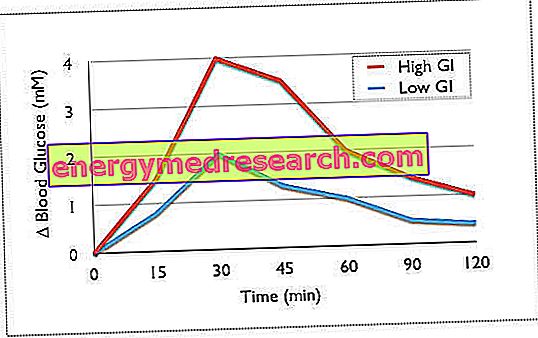Generality
Schüssler salts are natural products derived from homeopathic diluted inorganic salts .

Schüssler salts are named after their inventor, the German homeopathic doctor Dr. Wilhelm Heinrich Schüssler (1821-1898). These products are used for the treatment of various disorders, because - as hypothesized by Dr. Schüssler - they are able to restore the normal cellular functions that are altered in the presence of pathologies.
Please note
The practices described here are not accepted by medical science, they have not been subjected to experimental tests conducted with the scientific method or have not passed them. Such practices, therefore, could be ineffective or even be dangerous to health .
The information given is for illustrative purposes only.
Basic Concepts
Schüssler Biochemical Therapy and Salts
The administration of Schüssler salts for the purpose of treating disorders and diseases is called biochemical therapy, a name which, moreover, was coined by the German doctor himself.
It all began with some observations made by Schüssler during his studies.
In fact, Schüssler determined the presence of twelve inorganic salts within the human body and gave them great importance in the physiology of the body's component cells. This observation is completely true, since the salts identified by Schüssler are actually present in the body and carry out activities that are fundamental for its well-being.
Starting from these correct observations, however, Schüssler went further, hypothesizing that the alteration of the balance and of the concentrations of the aforementioned salts in the organism was the triggering cause of dysfunctions and diseases of all kinds. In light of this theory, the German doctor was convinced that the intake of these homeopathic diluted salts could restore normal cellular physiological functions, thus treating the diseases and disorders that arose following the alteration of intracellular saline levels.
Due to the homeopathic dilutions, however, the concentration of starting inorganic salts is so low (if not zero) that it is practically useless for a possible integration.
To this objection, the German doctor's hypothesis and his supporters answer that Schüssler's salts are not useful to compensate for any salt deficiencies, but they serve to send information to the cells of the organism in order to help them to remedy the imbalances of mineral salts that they can occur, giving rise to disorders and diseases. Furthermore, the administration of Schüssler salts would stimulate the body's cells to absorb and correctly use the inorganic salts taken with the diet.
In other words, according to the German homeopathic physician and according to his supporters, the intake of Schüssler salts would encourage self-healing by the cells and the whole organism.
Types of Salts from Schüssler
As mentioned the Schüssler salts are twelve, they are also present in the body and in different foods and are important in certain organs and tissues. According to Schüssler's theory, each salt is useful to counteract certain ailments or diseases. Let's look at them in more detail.
Number 1: Calcium fluoratum
The first of Schüssler's salts is Calcium fluoratum, better known as calcium fluoride and contained, in particular, inside the teeth. According to Schüssler's theory, this remedy is indicated for treating all those disorders in which there is a loss of tissue elasticity . More in detail, the first of Schüssler's salts is used against varicose veins, hemorrhoids, stretch marks, wrinkles, scars and cracks and in the case of teeth with delicate enamel.
Number 2: Calcium phosphoricum
Calcium phosphoricum (or calcium acid phosphate) is the Schüssler salt number two and is one of the components of the bone mineral matrix, but it can be found throughout the body.
According to the biochemical therapy devised by the German doctor, this remedy is useful in all those cases where there is a need for structural support . For this reason, the Schüssler salt number 2 is used in case of fractures, bone infections, spine disorders, rheumatic joint diseases, spasms, growth pains, osteoporosis and dental caries.
Number 3: Ferrum phosphoricum
Schüssler salt number 3 is Ferrum phosphoricum or iron phosphate. It is a remedy that is used above all against infections and inflammations at the initial stage, but also in the case of feverish stages, minor burns (such as, for example, sunburn), open wounds and scratches.
Number 4: Kalium chloratum
Kalium chloratum, or potassium chloride, is present both in the blood and in the cells and is also found in large quantities in fruits and vegetables. The fourth of Schüssler's salts is used against inflammation of the mucous membranes accompanied by dense and white secretions and against inflammation of joints and tendon sheaths .
Number 5 : Kalium phosphoricum
Schüssler salt number 5 is Kalium phosphoricum, or potassium phosphate. The components of this salt (potassium and phosphorus) are present in all body fluids and are also found in many foods.
The fifth of Schüssler's salts is used to counteract weakness and exhaustion, in case of physical and mental exhaustion and to combat insomnia due to various concerns.
Number 6: Kalium sulfuricum
Kalium sulfuricum, or potassium sulfate, is the salt of Schüssler number six. It is used above all in the case of chronic inflammations, but it is also used in the case of disorders associated with yellowish or greenish secretions, skin disorders associated with flaking, irregular nail growth and wounds that struggle to heal.
Number 7: Magnesium phosphoricum
The seventh of Schüssler's salts is Magnesium phosphoricum (magnesium phosphate). This remedy is mainly used to counteract muscle spasms and frequent cramps and is also used in cases of colic, insomnia and agitation.
Number 8: Natrium chloratum
The salt of Schüssler number 8 is the Natrium chloratum, better known as sodium chloride (so to speak, the common kitchen salt). The eighth of Schüssler's salts is considered to be the remedy that regulates the distribution of body fluids . In detail, it is used in case of water retention and in the event of excessive fluid loss (as can happen, for example, in the presence of diarrhea or vomiting).
Number 9: Natrium phosphoricum
The ninth of Schüssler's salts is Natrium phosphoricum, or sodium phosphate. It is considered as the salt that regulates the acid-base balance and is used in case of gastric hyperacidity and in case of excess uric acid (gout). In addition, it is also used to counteract digestive disorders, arthropathy and rheumatic disorders.
Number 10: Natrium sulfuricum
Natrium sulfuricum, or sodium sulfate, is the salt of Schüssler number 10. It is considered a useful remedy in the purifying processes of the organism and is believed to be able to favor the excretion of liquids. In detail, the tenth of Schüssler's salts is used in case of liver and gall bladder problems, in case of jaundice and pancreatitis and to counteract flatulence.
Number 11: Silicea
The eleventh of Schüssler's salts is represented by Silicea, or silicic acid. It is a remedy used to help maintain the elasticity of hair, skin and nails . For this reason, it is used in the case of brittle nails and hair, nails with irregular growth, premature aging of the skin, hair loss, acne and pimples.
Number 12: Calcium sulfuricum
The twelfth and last of Schüssler's salts is Calcium sulfuricum, or calcium sulfate. This salt is considered an anti-inflammatory remedy capable of stimulating cell growth. It is used mainly in the case of abscesses, pimples and other suppurative processes in which there is the leakage of pluses.
Did you know that ...
Schüssler salts are officially twelve, however, the successors of the German homeopathic physician have identified another twelve salts that are prepared in a similar way to those of Dr. Schüssler and are used to refine and support the treatment with the "original" salts described above.
The salts discovered by Schüssler's successors are defined as " complementary salts " and continue the numbering starting from the number 13 and arriving up to the number 24.
Preparation Method
How are Schüssler salts prepared?
As mentioned, Schüssler salts are prepared through homeopathic dilutions and, more precisely, by exploiting the homeopathic method of shredding with lactose .
To obtain the final products, therefore, the salts are shredded, diluted and dynamized, exactly as happens in the preparation of the proper homeopathic remedies.
The original dilutions used by Schüssler are the decimal ones and the most used are the D6 and the D12.
Please note
Although the method of preparation employed is of a homeopathic type, Schüssler's biochemical therapy differs from the principle of "the like care the like" which is the basis of homeopathy, where the prescription of one remedy rather than another depends on the similarity between the pathological picture of the patient and the pathogenic picture induced by the substance from which the remedy is obtained (we recall, in fact, that most homeopathic remedies are prepared starting from toxic or poisonous substances for the organism).
Schüssler salt therapy, on the other hand, is based on the symptoms reported by the patient that will determine which salt is best used.
Paradoxically, Schüssler's approach resembles (even minimally) that of modern medicine which aims to identify and treat the causes and symptoms of diseases rather than the homeopathic approach.
Posology and method of use
How are Schüssler salts taken and in what quantities?
Schüssler salts are available in tablet form which must be dissolved slowly under the tongue. The doses of product to be taken may vary depending on whether the disorder to be treated is in the acute phase or in the chronic phase.
Generally, in acute cases it is recommended to take one or two tablets at intervals of time that can vary from 5 minutes to 1-2 hours.
In chronic cases, however, it is customary to recommend taking one or two tablets 3-6 times a day, half an hour before or an hour after meals.
Please note
Even if it is an alternative medicine based on taking natural products, before taking Schüssler's salts it would be good to consult an experienced homeopathic doctor.
Side effects and contraindications
At the moment there are no known side effects due to the intake of Schüssler salts, just as there are no contraindications, except in cases of known allergies or intolerances to one or more components (for example, lactose intolerant cannot take these remedies, since they are prepared by trituration with lactose).
Theoretically, Schüssler salts can also be used during pregnancy and lactation, but this category of patients should always seek the prior advice of their doctor before taking any substance.
Effectiveness
Are Schüssler Salts Effective?
The hypothetical efficacy of Schüssler's salts has not been proven in any way.
The concentrations of salt within these remedies are so low (if not zero) that it is highly unlikely that these products will have any therapeutic effect. In addition to this, there is no scientific basis for stating that the diseases and disorders for which the administration of Schüssler salts is indicated are caused by an alteration of the intracellular levels of the aforementioned salts. Moreover, these diseases cannot be treated with the simple assumption of inorganic salts.
It is true that some people claim to have treated various types of disorders by taking Schüssler's salts, however, in light of the above considerations, it is considered that this is not a real therapeutic effect, but a placebo effect, a bit like many other alternative medicine practices.



